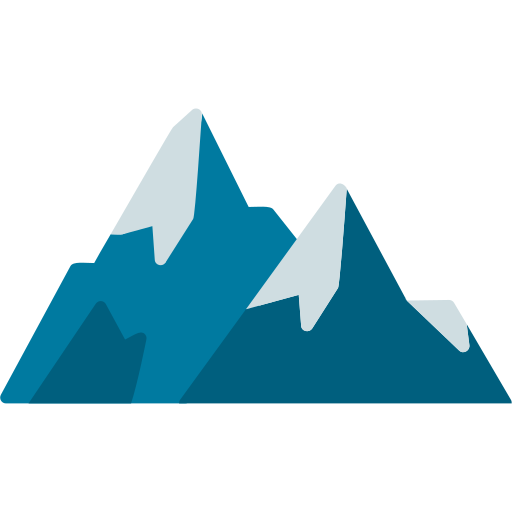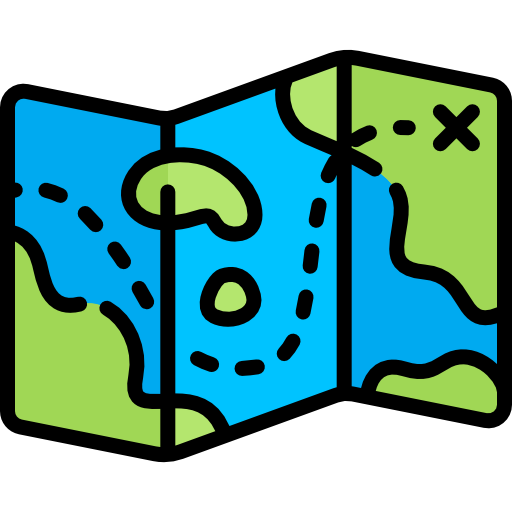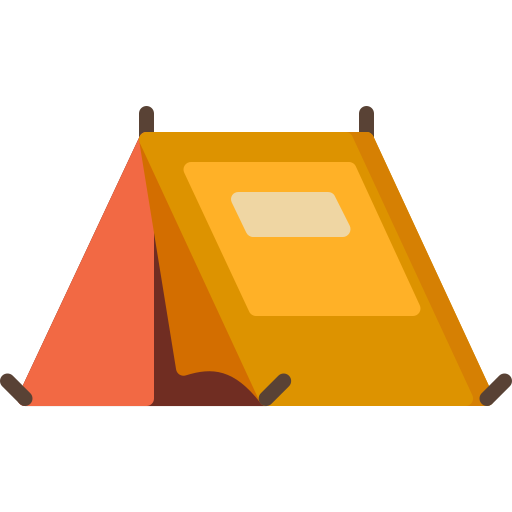Borasu Pass Trek
22000/ Per Person

Altitude :
17,880 ft.

Duration:
8 Days

Trek Length

Base Camp:

Trek Difficulty :
Moderate.

Altitude :
17880ft.

Duration:
8 Days

Trek Length

Base Camp:

Trek Difficulty :
Moderate
Overview
Borasu Pass is one of the many passes that link Uttarakhand and Himachal Pradesh. The Tons River Valley and the Baspa River Valley are linked by it. From Har Ki Dun forest rest house to Chitkul road head in the Baspa Valley, it is a high but practical traverse into the great Kinnaur Valley that takes 3 to 4 days. The trail heads north from Har ki Dun along with the Marinda Gad (river). The ascent becomes easier after that, and the route winds up for about 5 kilometers through a flower-strewn narrow valley. We climb for about 4 kilometers to the pass, passing by a glacier to our right. Then we make our way down the rocky slopes to the Baspa bed. The trek to Chitkul from the camping ground here is relatively straightforward. The Borasu pass is located at a height of 5,450 meters. As a result, it’s ideal for thrill-seekers!
Itinerary
Day 1: Dehradun to Sankri (1920 m) (210 km) (7/8 hours)
We leave Dehradun early in the morning and arrive in Sankri in the evening. After passing through a checkpoint at Netwar, the final stretch takes us through the Govind Pashu National Park. We sleep in a guest house or a camp at night.
Day 2: Sankri to Taluka to Cheludgad (2700 m) (5/6 hours)
The next day, take a taxi from Sankri to Taluka, which is about a 10-kilometer drive. There is plenty to do once you arrive in Taluka. There are a few shops and forest rest houses where
Day 3: Cheludgad to Seematra (3400 m) (7 km) (4/5 hours)
On day three, the hike is 7 kilometers long. It’s a thrilling day because you’ll pass by several bridges and streams, many of which are photo opportunities, including the popular suspension bridge. If you’re lucky, you’ll be able to see the stunning roaring waterfalls as
Day 4: Seematra to Har Ki Dun(3645 m) (7 km) (4/5 hours)
On day four, the hike is again 7 kilometers long. After completing the Har Ki Dun Trek, you will want to stay in this area. Har Ki Dun is well-known all over the world. Har Ki dun Trek attracts visitors from all over the world. Looking at the litigants makes people comfortable. Enjoy spotting a diverse range of trees and animals in this area, which is abundant in flora and fauna.
Day 5: Har Ki Dun to Ratta Tho(4105 m) (7 km) (4/5 hours)
Since Ratta means red and Tho means stone, the trek begins on Ratta Tho, also known as Lal Patthar. The path is approximately 7 kilometers long and can be completed in no more than 5 hours. While going through Har Ki Dun, one can see the Ganga flows. The lush green
Day 6: Ratta Tho to Upper Lamjunga(4899 m) (8 km) (5 hours)
The crossing of streams in the lower sections of the Borasu Glacier is required here, and the climbing is extremely difficult. The trek is moderate to ensure the trekkers’ safety and comfort. You’ll arrive at Saunbhera, a vast meadow. From here, you can get a good view of the snow-capped peaks. Also in June and July, snow-capped peaks can be seen. However, the snow can be incredibly slick. Lamjung is about a 2-hour drive from here. You will arrive at your destination after going through all of the boulders. This night’s camping spot will be Lamjung.
Day 7: Upper Lamjunga to Borasu Pass (5450 m) and Bonga Camp (4470 m) (11 km) (6/7 hours)
This is the longest and most exhausting day of the journey, and it must be started early in the morning, about 4 a.m. Start your day with a light breakfast to reduce your risk of being sick. To begin climbing, one must first cross moist edges. In the first hour, you can arrive at theRead Less
Day 8: Bonga to Chitkul via Rani Kanda and Drive to Shimla (3450 m) (13 Km) (6/7 hours)
Today is when we say goodbye to each other & complete our Borapasu Pass Trek. Continue rambling to see deep wildflowers and fruits used by the local shepherds. Trek through dense forest to the end of the isolated trail, where Rani Kanda and the Beas River can be found and seen. One can rest here for a while before heading to Chitkul. Finally, we drive back to Shimla.
Inclusion
- Pick and Drop Service from mentioned location
- Fees for the guide and the chef
- Camping facilities’ rent
- Entrance fees to the forest
- To transport camping gear, a porter and mule are required. Please keep in mind that personal baggage can be borne by mules and/or porters for a fee
- From the first day’s dinner until the last day’s brunch, both of the meals are vegetarian
- Throughout the walk, you’ll be staying in a tent or if possible, then in a guest house
Exclusion
- No pickup and drop point from/for your hometown
- Personal costs include things like tips, personal medications, and conference calls, etc
- Apart from what is mentioned above, some transportation assistance during the trek
- Porters/mules can carry personal luggage weighing up to 12 kg per bag per person for Rs 350 per day per bag
Thing To Carry
- Footwear: The trekking boots which must be waterproof and snow proof, normal boots, floaters, and woolen socks.
- Backpack: (50 ltr), Daypack (20-30 ltr), Duffel bag.
- Clothes: Jacket and trousers that are both waterproof and breathable. Jacket (synthetic or down feather fleece), synthetic insulated trousers, poncho, sweatshirt, inner thermal (upper & lower), fleece, t-shirts, cotton trekking pants, shorts
- Season wise Clothes:
- Hand and head protection includes liner gloves, bandannas, sun hats, woollen caps, and face masks, among other things.
- Accessories: Sunglasses/goggles, anti-glare lenses, water bottle, hydra bag, and headlamp with spare bulb and extra batteries are all recommended.
- Trekking Gears: Toolkit for an emergency. Sunscreen, a toiletry pack, water purification pills, Ziploc packs, ear plugs, first-aid kit, and the necessary medications are all recommended.
- Camping Equipment: Sleeping bags of lining (extreme -5 to +5 Celsius if you have one), trekking sticks, and so on.
- Warm top/light micro fleece pullover/full sleeve T shirt – 2/3
- Water resistant/repellent trekking pants with an inner lining for added warmth- 2 High-quality windproof/water-resistant outer shell (jacket) with a proper hood
- Thick Fleece / Full-sleeve Woollen Jumper, Down Jacket with at least 600 fill capacity Innerwear with a thermal component (upper and lower)
- Woolen hat, inner fleece gloves, and outer water-resistant gloves
- 4–5 pairs of thick woollen socks and standard socks, scarf/muffler (optional)
- Waterproof Trekking/Hiking shoes with a thick heel and high ankles that are comfortable to wear. Sneakers/sport shoes are ideal for camp.
- Poncho or raincoat. A small, light-weight towel
- A hydration pack and an insulated water bottle (optional)
- Sunglasses with UV cover and the potential to cut light, as well as a cap or floppy hat to shield the strong sun off your skin (important when traversing through snow)
- Trekking pole or sturdy walking stick Lip Balm, Sunscreen Lotion
- Flashlight / torch (with extra batteries) Medications, if any special prescription is needed Toiletries for personal use
- Carry a rain cover over your luggage • Day pack/small bag that you can carry on your back all day to keep your essentials in
- Keep a few poly bags or plastic containers in your bag to place your things in if you need to in case of heavy weather.
Must Read Articles
Best time for the trek
🗓️ Best Time to Trek — A Guide by Octatrav
One of the key advantages of many Himalayan treks is that they remain accessible for a large part of the year. Most trekking routes open up in March, welcoming trekkers with springtime freshness and moderate temperatures. This season continues through late June, offering pleasant weather and clear views—ideal for a memorable trekking experience.
🍁 Trekking resumes in mid-September and continues until late November, when the landscape transforms with golden leaves and crisp air. This autumn window is perfect for those who prefer scenic beauty combined with clear skies.
❄️ Winter trekking, although breathtaking, comes with challenges. From December to mid-March, most high-altitude trails get buried under heavy snow, making them inaccessible or risky. Government authorities usually restrict entry during this time to avoid mishaps due to extreme cold, snowfall, and avalanches.
✅ Summary:
Spring & Summer (March–June): Best time for pleasant weather and blooming landscapes.
Monsoon (July–Early September): Most trails are closed due to safety concerns.
Autumn (Mid-September–November): Ideal time with great weather and views.
Winter (December–Mid-March): High snow levels; many treks remain closed.
With Octatrav, you’ll always be informed about the best seasons for your chosen trek. Our expert guidance ensures that you trek during the safest and most scenic times of the year, making your adventure both memorable and secure.
How Difficult is the trek
This trek is generally considered to be of moderate difficulty, with a rating that can vary from easy to challenging depending on your experience and fitness level.
The journey begins at a base village situated around 6,000 ft, gradually ascending to a maximum altitude of nearly 11,500 ft over the course of a few days.
While the route mostly involves a pleasant hike through scenic landscapes, here are two main reasons why it falls under the moderate category:
– Long daily distances: On average, you may be covering 10 km per day, which demands good stamina and consistent pacing.
– Limited exit points: Most treks of this nature have only one route in and out, making emergency exits or quick returns difficult in case of unforeseen situations.
How to get fit for your trek
How to Prepare for a High-Altitude Trek
Fitness Guide by Octatrav
Preparing for a trek requires building both stamina and strength. One of the best ways to get started is by jogging, which targets the same muscles used during trekking—calves, glutes, and hamstrings. It’s a simple and effective way to improve endurance without the need for any equipment.
Minimum Fitness Target
To trek comfortably, you should be able to run 5 km in under 60 minutes. This ensures that you can maintain a steady pace and handle long walking hours at altitude.
How to Achieve This?
Here’s a structured plan you can follow:
🏃♂️ Cardio Training:
Jog at least 4 times a week – consistency is key.
Start small – begin with 2 km runs and gradually increase the distance.
Pace improvement – once you’re running 5 km, aim to bring your timing down to under 35 minutes.
Maintain for 2 weeks – consistently hitting this goal helps build real endurance.
⏳ Training Duration:
Prepare for at least 4–6 weeks based on your current fitness level. The earlier you begin, the better your trek experience will be.
💪 Strength Training Routine
Combine cardio with strength workouts to build muscular endurance:
Squats – builds quads, glutes, and hamstrings.
Lunges – mimics trekking motion; strengthens the entire lower body.
Step-ups – improves climbing strength for steep trails.
Core exercises – planks, Russian twists, leg raises for balance and stability.
Back workouts – deadlifts, bent-over rows, and shoulder presses to carry your backpack with ease.
🧘♂️ Flexibility & Recovery
Stretch daily – especially your calves, hamstrings, quads, and lower back.
Incorporate yoga or Pilates – enhances flexibility and mental focus.
Take rest days – they are essential for muscle recovery and injury prevention.
🔁 Trek-Ready Summary
🏃♂️ Cardio: Build stamina through jogging.
💪 Strength: Focus on legs, back, and core.
🤸♂️ Flexibility: Stretch regularly and stay injury-free.
⏳ Consistency: Stick to a 6–8 week routine for best results.
10 Reasons to Choose Octatrav for Trek
Why Choose Octatrav for Your Trekking Adventure?
Trekking in the Himalayas is a thrilling and unforgettable experience. Whether you’re walking through snow-covered paths, lush forests, or peaceful riversides, choosing the right trekking operator is crucial for a safe and comfortable journey.
Octatrav stands out as a trusted name in the trekking world. Here are 10 strong reasons to choose Octatrav for your next high-altitude adventure:
1. Experienced Professionals
Octatrav’s team includes highly trained professionals who know the terrain, weather, and routes in depth. Their insights and support will elevate your trekking experience.
2. Focused on Safety
Trekking at altitude can be unpredictable. Octatrav ensures your safety by equipping the team with first-aid kits, oxygen, and emergency protocols for any situation.
3. Small Group Sizes
To give you personal attention and a relaxed experience, Octatrav keeps group sizes small. This also reduces environmental impact and makes for smoother trekking.
4. Eco-Friendly Trekking
Octatrav encourages responsible travel. From minimizing plastic use to proper waste disposal at campsites, they help you leave no trace.
5. Comfortable Camping
After a long day of trekking, good rest matters. Octatrav sets up cozy camps with quality tents, warm sleeping bags, and hot meals so you sleep well and stay energized.
6. Nutritious Meals
Fueling your body right is essential. Octatrav serves fresh, nutritious meals for both vegetarians and non-vegetarians to keep your energy levels high throughout the trek.
7. Affordable Packages
You don’t have to overspend for a great experience. Octatrav offers budget-friendly packages that include accommodation, meals, guidance, and permits—everything you need.
8. Relaxed & Scenic Pace
Octatrav designs treks that balance exploration and rest. You’ll get ample time to absorb the beauty around you without rushing through the journey.
9. Customizable Itineraries
Want a special experience? Octatrav helps you tailor the trek to your preference—be it a solo hike, photography-focused trail, or a slower pace.
10. Trusted by Trekkers
Octatrav is praised by many happy trekkers for its hospitality, safety, and professionalism. The positive reviews speak for themselves.
Why You Should Do the Har Ki Dun Trek
Why Choose This Himalayan Trek for Your Next Adventure? – by Octatrav
Exploring the Himalayas is a dream for many, and every trail has its own magic. Whether you’re a first-time trekker or a seasoned explorer, here are ten reasons why your next trek with Octatrav can be an unforgettable experience:
1. 🏔️ Breathtaking Scenery
Enjoy mesmerizing views of snow-covered peaks, lush green valleys, sparkling rivers, and alpine forests. Each turn on the trail feels like walking through a postcard.
2. 🏡 Rich Cultural Experience
Pass through remote villages where you can interact with warm-hearted locals, witness age-old traditions, and taste authentic mountain hospitality.
3. 🌿 Diverse Flora and Fauna
From rare Himalayan birds to elusive animals like musk deer or black bears, the region is rich in biodiversity. Nature lovers and wildlife photographers will find every step rewarding.
4. 🥾 Moderate Difficulty Level
Most Himalayan treks are rated as moderate, which makes them suitable for beginners with preparation, and still exciting for experienced trekkers looking for beauty and challenge.
5. 📖 Mythological & Historical Depth
Many Himalayan regions are steeped in legend and ancient lore. Walking these trails often feels like stepping into a living story from Indian epics or ancient folklore.
6. 🤫 Peaceful & Untouched
Less commercialized treks offer serene trails where you can disconnect from city chaos and truly reconnect with nature and yourself.
7. ⛺ Unique Campsites
Camp under a sky full of stars, beside rivers or deep in pine forests. The silence, the chill, the camaraderie — it’s an experience that stays with you forever.
8. 🎒 Adventure Add-ons
Beyond trekking, enjoy photography, bird watching, star-gazing, or even meditative moments in nature. It’s not just a trek — it’s a full adventure retreat.
9. 🌅 Magical Sunrises & Sunsets
Witness golden hours like never before — with Himalayan peaks glowing pink, orange, and gold. These views are pure magic and make every effort worthwhile.
10. 💪 Personal Growth
Trekking challenges your body and mind, pushing you beyond limits. By the end, you’ll not only have beautiful memories but also a stronger, more confident version of yourself.
